Best of Computex 2025: More hardware than hype
Despite the show’s AI theme, the best products offered more traditional functionality.
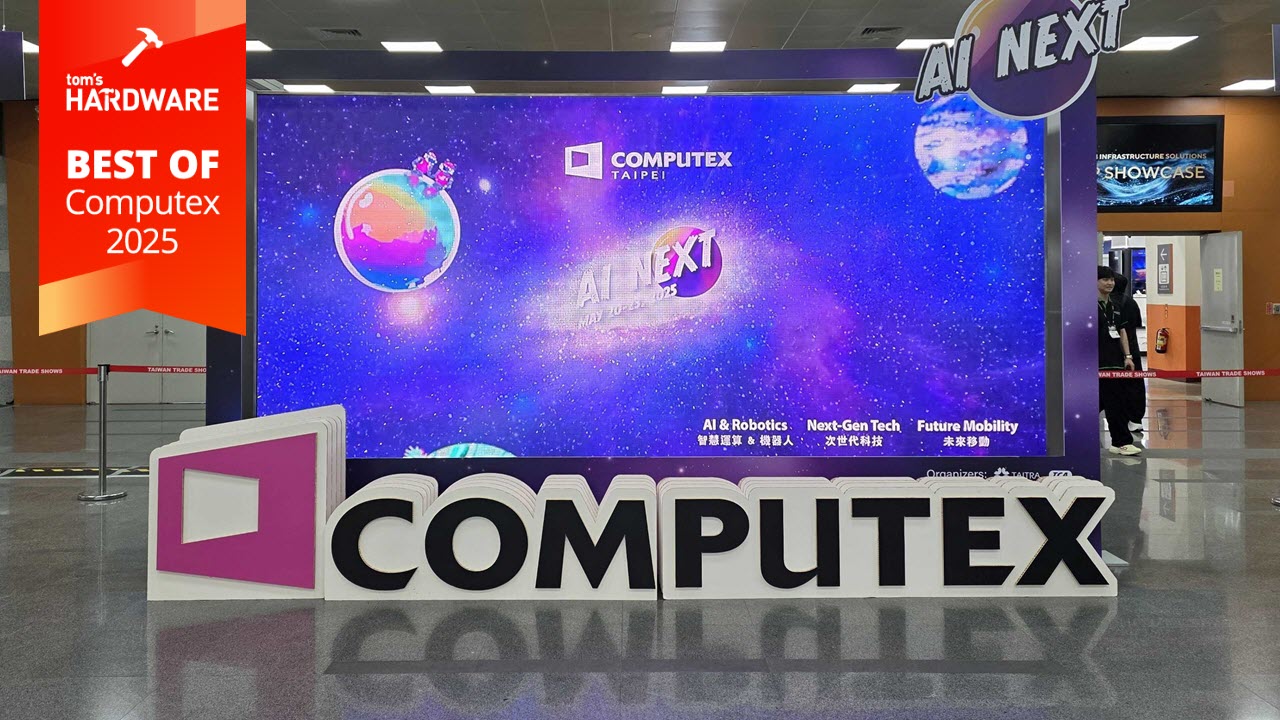
Each spring, most leading PC hardware vendors gather in Taiwan for Computex, a huge showcase of everything from giant laptops to mini PCs, monitors, cooling, storage, CPUs and graphics cards. If you love PCs like we do, this show is the most important one of the year.
This year’s expo was dubbed “AI Next,” because every computer and component has to at least claim to benefit from AI. However, many of the most innovative products were iterating on tried-and-true formulas that are either unrelated to or tangentially related to the training and inference features we commonly associate with AI.
This year’s standouts include a Minecraft-themed cooler, a blazing fast SSD, even-faster SSD controllers and a case that makes us all wish we were back in 1989. These are the 16 best products of Computex 2025.
AMD Ryzen Threadripper 9000 Series
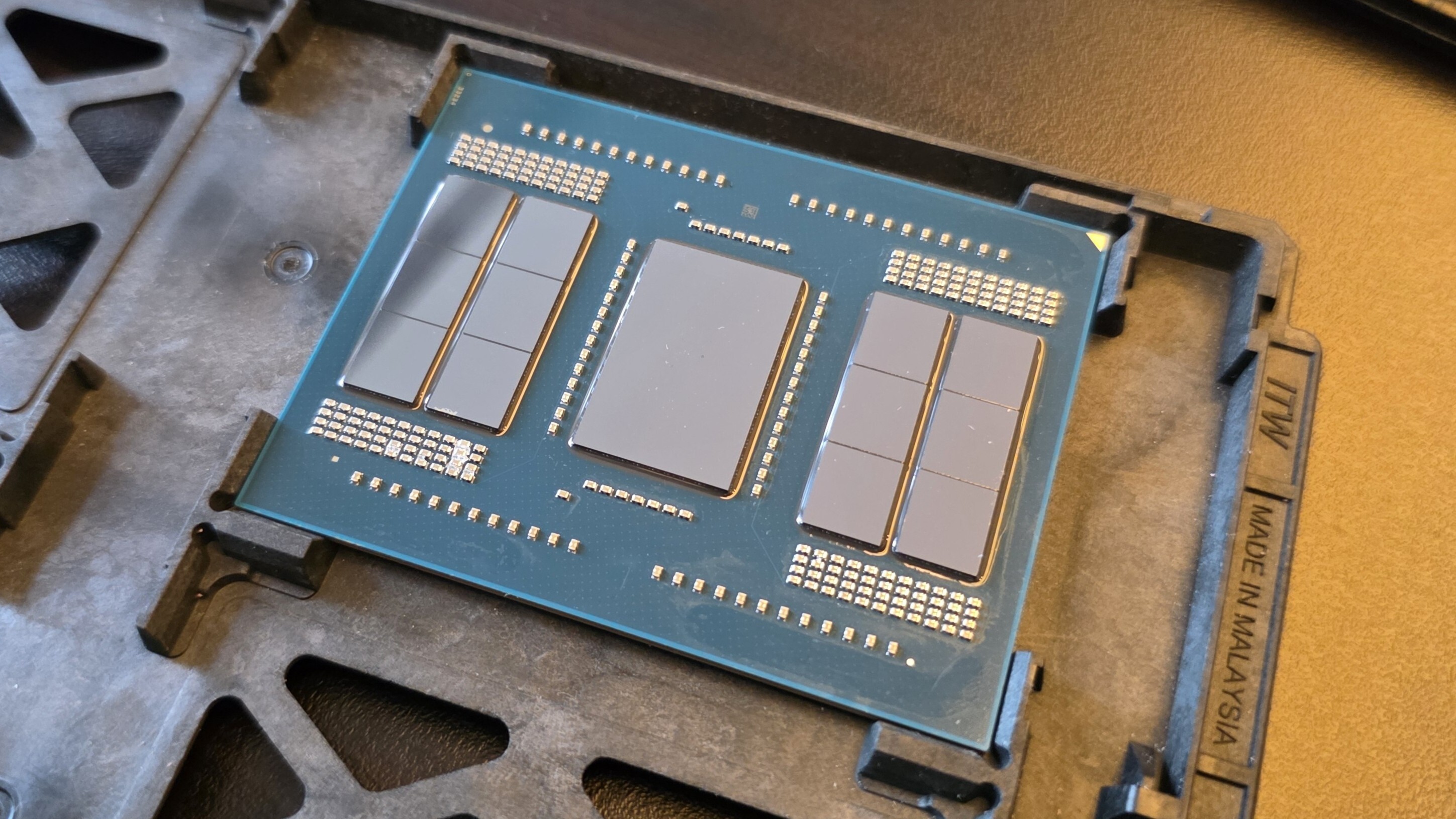

The Ryzen Threadripper 9000 ‘Shamida Peak’ series builds on the company’s commanding lead over Intel’s competing workstation processors, stretching the performance advantage up to a ludicrous 2.2X faster than Intel’s fastest chip. That performance comes courtesy of the move from the Zen 4 architecture to Zen 5, along with the use of the faster TSMC 4nm process node.
The flagship Ryzen 9 9995WX touts 96 cores and 192 threads, with peak boost clocks of 5.4 GHz and a 300W TDP, delivering what should be devastating performance in threaded workloads when the chips arrive in July. As with the last generation, AMD introduced both WX-Series Threadripper chips for higher-end workstations, while the non-Pro Threadripper models slot into the HEDT segment.
The new Threadripper 9000 series drops into the same sTR5 motherboard platforms as the previous-gen Threadripper processors, making upgrades as simple as a BIOS update. The new processors deliver up to 22% more performance in threaded workloads than their predecessors. AMD does expect a few motherboard refreshes as part of the launch, but most vendors will stick with their existing platforms. That’s a win for upgraders, especially given that all existing sTR5 CPU coolers will also be compatible.
The Ryzen Threadripper 9000 series solidifies AMD’s already commanding lead in the workstation market through the virtues of the Zen 5 microarchitecture and an upgraded TSMC 4nm process node. We expect these chips to thoroughly beat Intel’s competing Xeon W-series chips in nearly every facet when they arrive for our review in June.
Get Tom's Hardware's best news and in-depth reviews, straight to your inbox.
– Paul Alcorn
AMD Radeon RX 9060 XT
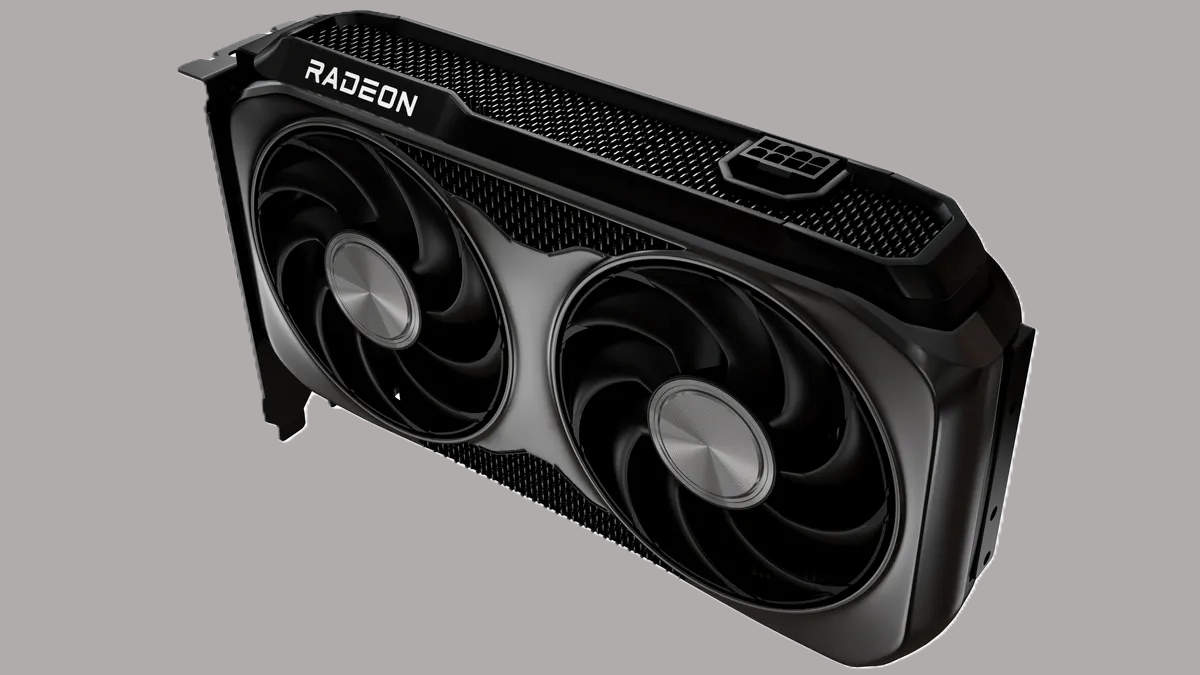

Now that Nvidia has dropped its mid-range level cards, AMD used Computex as a stage to set up its competitors. AMD's Radeon RX 9060 XT comes out in a few short weeks, and we're very interested to see how it compares to the Nvidia GeForce RTX 5060 and RTX 5060 Ti.
The card starts at $299 for an 8GB version and $349 for a 16GB model, though that assumes you'll be able to find them at retail price (a caveat we're seeing a lot with GPUs lately).
The 9060 XT will use AMD's new Navi 44 architecture with 32 Compute Units (CUs), and it boasts a 3,130 MHz boost clock, even higher than the Radeon RX 9070 series. In some charts, AMD had the 9060 XT beating the 5060 Ti, though it compared a 16GB AMD card to an 8GB Nvidia card. That being said, the 16GB 9060 XT's $349 starting price does put it on better price footing.
We're hoping this card will deliver in the value segment where it's desperately needed.
Read more: AMD Radeon RX 9060 XT launches on June 5, starting at $299
– Andrew E. Freedman
Phison E28 SSD controller


Phison pioneered the PCIe 5.0 SSD transition with its award-winning E26 SSD controllers that powered nearly every one of the new speedy SSDs when they first arrived, but now the Phison E28 promises to take performance and efficiency to new heights.
The original E26 controller was powerful, but it traded off higher power consumption for extreme performance, thus resulting in higher heat generation that not only required robust cooling solutions but also hampered its use in laptops.
The Phison E28 delivers huge efficiency gains by using a smaller 6nm process node that cuts power consumption dramatically. At Computex 2025, Phison demoed its new controller handily beating the competing SMI 2508 in power consumption during nearly every type of operation. That equates to lower heat generation, meaning these SSDs won’t require bulky coolers, and will also help PCIe 5.0 SSDs finally make their way into mainstream OEM laptops.
Phison didn’t skimp on performance to reduce the power consumption, though. The Phison E28 delivers up to 14.8 GB/s of sequential read/write performance and a blistering 2.5 / 3.0 million random read/write IOPS, speeds which were unthinkable a mere few years ago.
Phison says we’ll see a wave of E28-powered SSDs coming later this year, with a likely CES 2026 launch date. In fact, we saw plenty of E28 SSDs scattered throughout the Computex show floor at all of the main SSD vendors, proving that we won’t have to wait much longer for SSDs with extreme speeds coupled with excellent power efficiency.
– Paul Alcorn
Asus ProArt RTX 5080
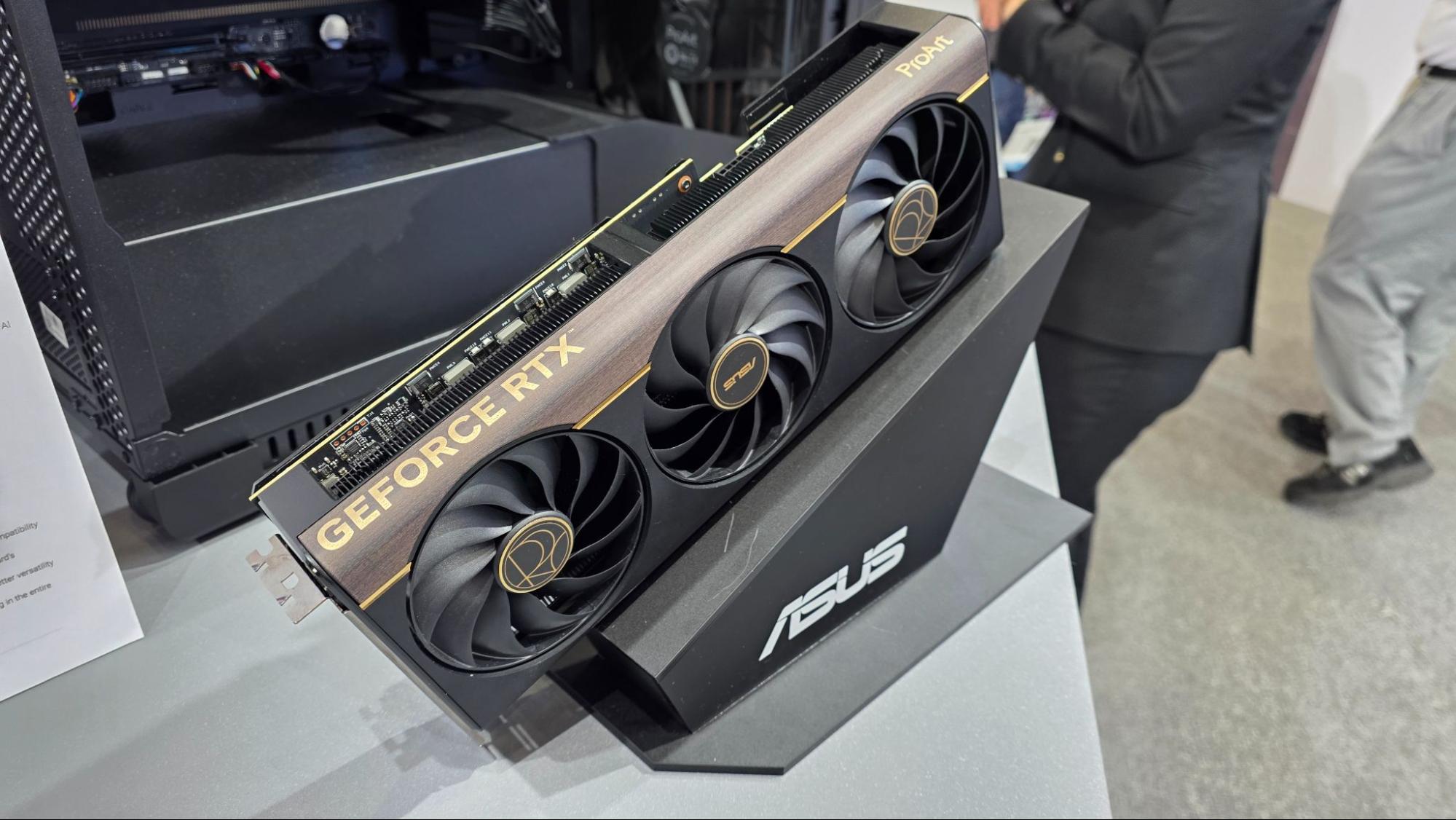

Asus's take on the RTX 5080 for creatives has a woodgrain finish, which we've seen a lot on cases, but not as much on GPUs. But that's not the only way the ProArt RTX 5080 ProArt stands out.
Some variants of this GPU also have an M.2 slot for PCIe 5 SSDs so you can expand storage on the card. There's also a USB Type-C port on the back to add another port to the PC.
There are two versions of the card with "reference" specs, while the other two will have overclocks.
We don't see a ton of aftermarkets that impress us by being classy, but this card will look great in a lot of trendy cases with wood. Hopefully it performs as well as it looks.
Read more: Asus RTX 5080 ProArt comes with a wood grain finish and M.2 slot option
— Andrew E. Freedman
Crucial T710 SSD
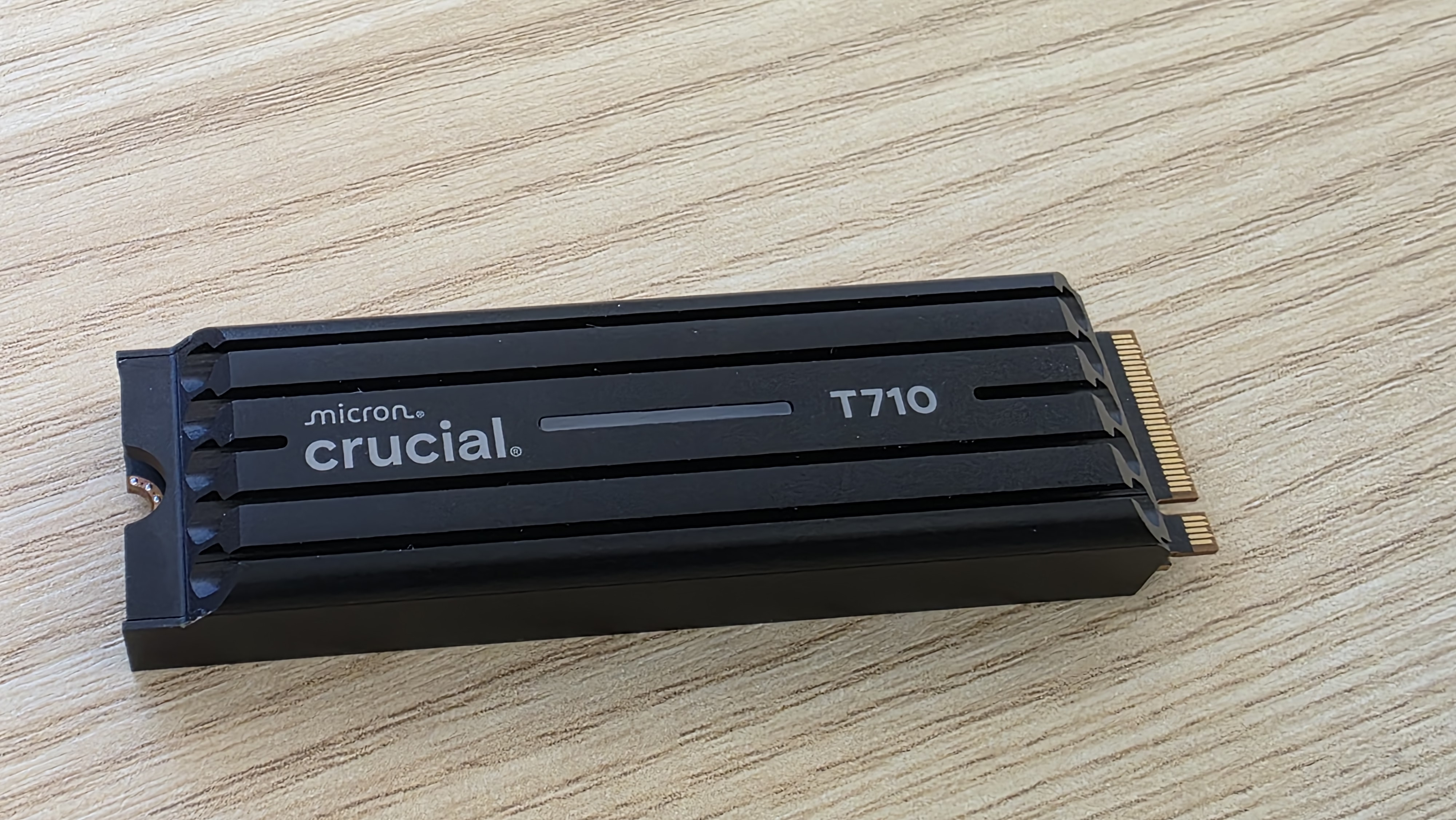

At the moment, the fastest consumer SSD around is Crucial’s T705, which delivers an impressive 1.55M IOPS of random reads and 1.8M IOPS of random writes. But Crucial is debuting a massive upgrade in the T710.
The T710 promises to be 28 percent faster at random reads and 42 percent faster at random writes. The optional heatsink is about half the thickness of the one on its predecessor, saving space.
The M.2 chip is single-sided where the T705 was double-sided. The drive also uses 67 and 80 percent less power per IOPS random read and random write. Both of these features make it viable for use in a laptop where the prior model was not.
Read more: Crucial announces T710 SSD with 14.9 GB/s of performance, X10 portable SSD up to 8TB
– Avram Piltch
Predator Triton 14 AI
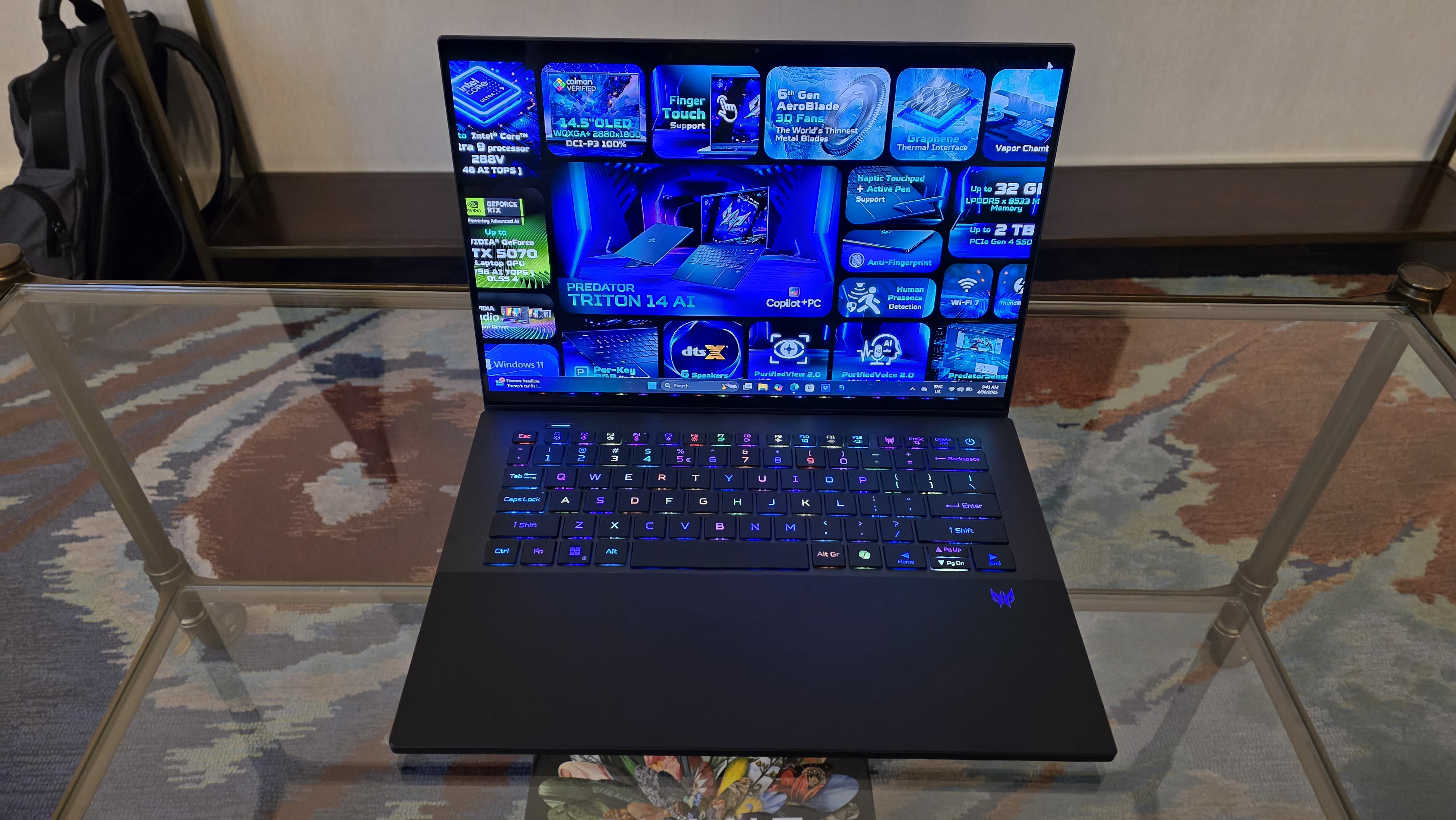

At 3.5 pounds and 0.68 inches thick, with a snazzy haptic touchpad and a pretty, 14.5-inch 2880 x 1800 OLED screen, Acer’s Predator Triton 14 AI looks to take on the best of what Razer has to offer, while appealing to both gamers and creators on the go.
It also has an oddball pairing of a lower-power Lunar Lake Core Ultra 9 288V CPU with RTX 5070 graphics. Time (and testing) will tell how this affects frame rates. But it also might mean significantly better battery life for those times when you aren’t gaming. I look forward to getting this ultraportable gamer in for testing to see how it compares to the also-new Razer Blade 14.
Read more: Acer has a new pair of 14.5-inch laptops for gaming on the go
– Matt Safford
Corsair Air 5400
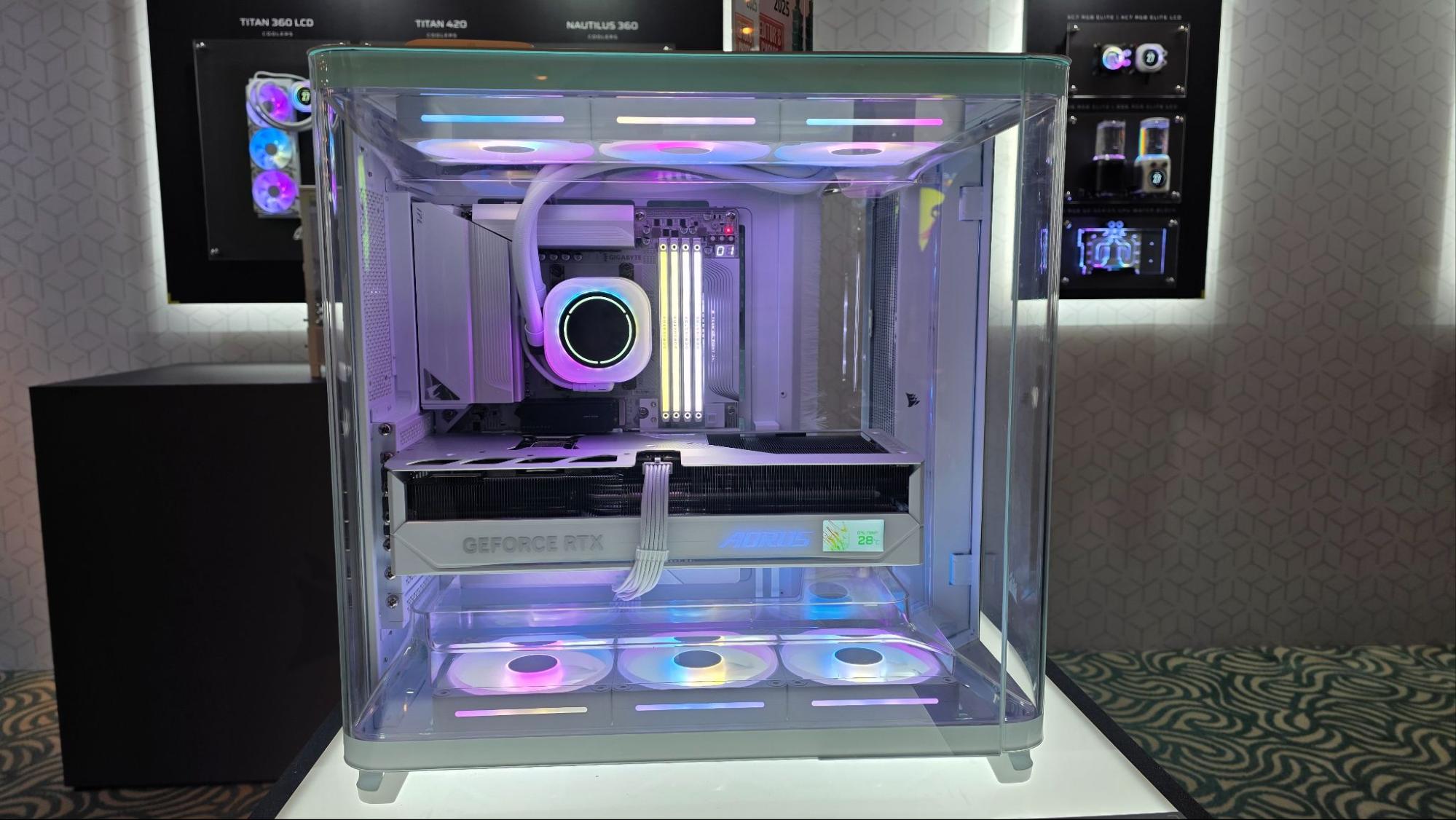

I saw dozens of cases at Computex, but Corsair’s Air 5400 stands out because it combines the popular curved glass front and side panels with a fair bit of innovations and firsts. Rather than churning out another dual-chamber chassis, Corsair added a third chamber, isolating the 360 mm radiator by basically putting it outside the rest of the case, pulling in air from the front and venting it out the side.
To cool the GPU and other components, a duct funnels the bottom intake (provided by a trio of reverse-blade fans) directly over the motherboard area, while heat gets exhausted out of the top. And back-connector motherboards are supported for the cleanest interior possible.
The Air 5400 is also the first case I’ve seen with three USB-C ports on the top panel. But while I appreciate the more modern move here, I still would have preferred at least one USB-A port.
Read more: Corsair’s Air 5400 features a triple-chamber design for high-performance cooling
– Matt Safford
SilverStone FLP02


This case makes us want to party like it’s 1989! If you’re old enough to remember (or have spotted in your parents’ garage) a PC from the late 1980s or early 1990s, SilverStone’s FLP02 will take you back to a time when beige cases were all the rage and floppy disks were still at the top of the storage food chain.
This mid-tower case has all the classic design elements we loved when George H. W. Bush was president of the United States and most people weren’t using Windows yet. There are three 5.25-inch bays that have covers which look like 5.25-inch floppy drives but don’t function. You can remove the fascia and place an optical drive or set of ports or other internal drive inside.
There’s a hard power switch, a turbo button and a key lock. The key lock actually works in that it prevents you from turning the PC on or off if you have it turned. The turbo button controls your fan speed.
There are also a series of modern front ports that are hidden under a magnetic panel. These include two USB Type-A ports, a USB-C port and a 3.5mm audio jack.
With the FLP02, you can get the best of both worlds: a bold beige look that brings feelings of nostalgia and room for modern parts like an ATX motherboard, a long graphics card and plenty of fans.
Read more: SilverStone reveals late-80s style tower PC case — proudly beige but thoroughly modern inside
– Avram Piltch
Seasonic Prime Power Supplies
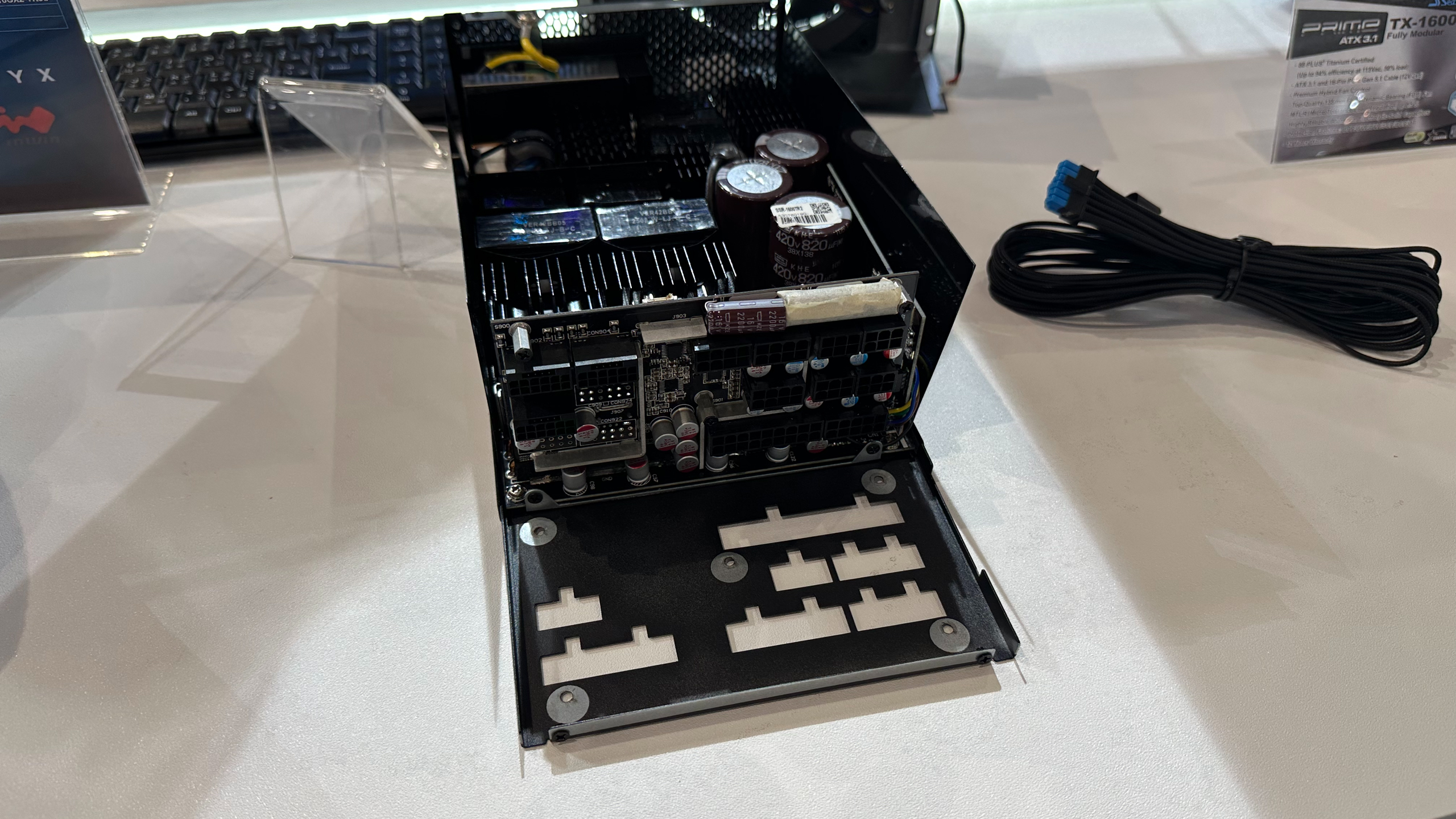

The biggest problem in PC building over the past couple of years has been the infamous melting power connector problem. If you use a graphics card with a 12VHPWR connector like the RTX 4090 and there’s a problem with how well it’s plugged in, the connector could melt and take your GPU with it.
Seasonic’s next-gen Prime power supplies attempt to solve this problem using sensors that detect if there’s a voltage problem, connect to an external device and alert the user. If the user is not around to act on the alert, the power supply shuts down to prevent damage to your equipment.
Read more: Seasonic’s next-generation Prime PSUs to will try to stop connectors from melting
– Avram Piltch
Asus ROG Falcata
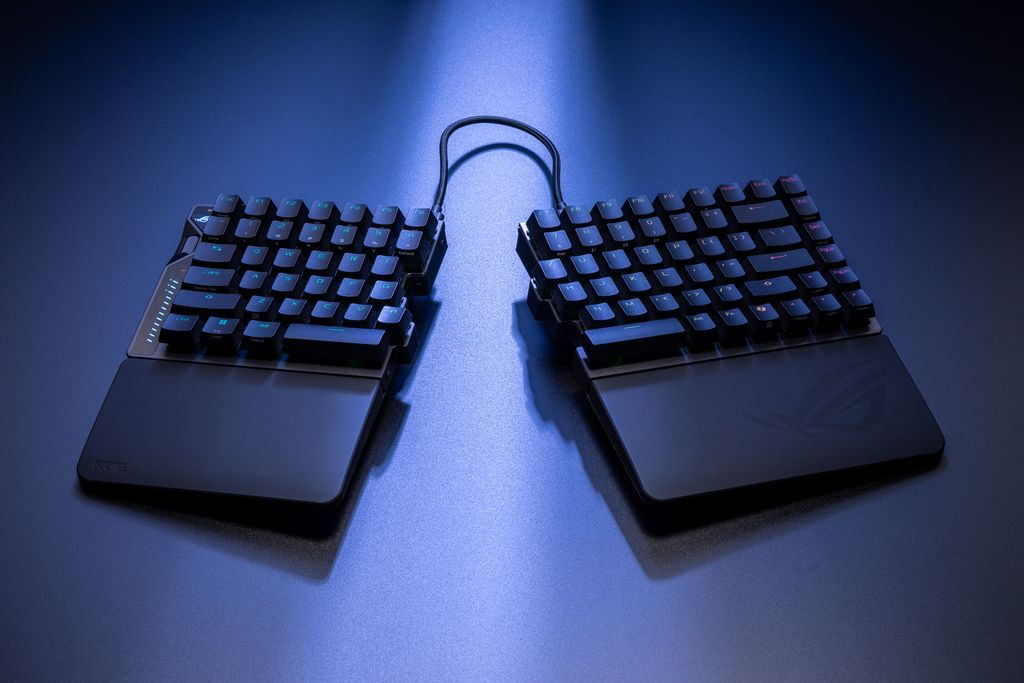

Look, I’m not sure there’s a huge market for a high-end, split keyboard for gamers. But I have definitely had moments playing FPS and RTS titles where I only needed half the keyboard and the other was cramping my mouse game.
For those who have that feeling often, or who also prefer a split layout for more comfortable typing, Asus has delivered the Falcata. It features pre-lubed HFX V2 magnetic switches that feel smooth, and the whole keyboard feels built like a tank – albeit one that has been split down the middle and held together by a braided USB-C cable.
After a brief time with it, I was left wanting to spend more time with Falcata, both for gaming and productivity. I probably don’t want to know how much it’s going to cost, though, because the Falcata is clearly a niche product, and it feels nearly as premium as the company’s $500 ROG Azoth Extreme.
Read more: Asus ROG Falcata brings split layout and magnetic switches to competitive gaming
– Matt Safford
Cooler Master Elite case line
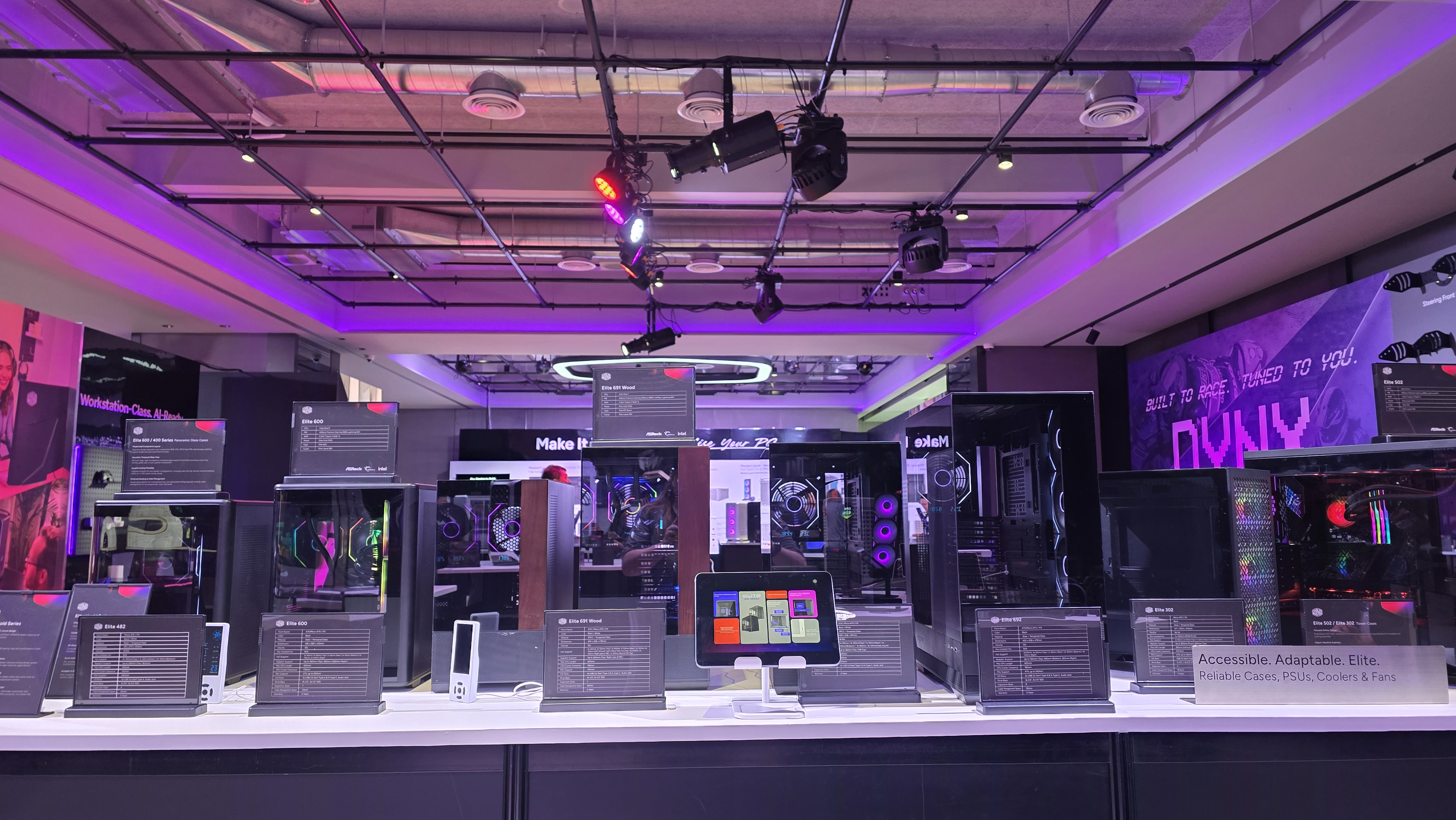

In a climate where everything feels like it’s lurching toward unaffordability, I was shocked when Cooler Master told me that all of its Elite PC case lineup is expected to sell for less than $100, and that at least one of the curved glass models should sell for just $70. That doesn’t include tariffs, though, so there’s a good chance the prices will be at least somewhat higher in the U.S.
But even if you tack on an extra $20 or so, these still look to be some nice-looking mainstream cases that would have cost significantly more a couple of years ago. Sure, you might not be able to afford a GPU, and inflation is still inflicting pain on our wallets elsewhere. But it’s nice to know we can look forward to some decent sub-$100 PC cases later this year from Cooler Master.
Read more: Cooler Master plans to launch a curved-glass case for around $70 – at least outside of the U.S.
– Matt Safford
Lian Li V200
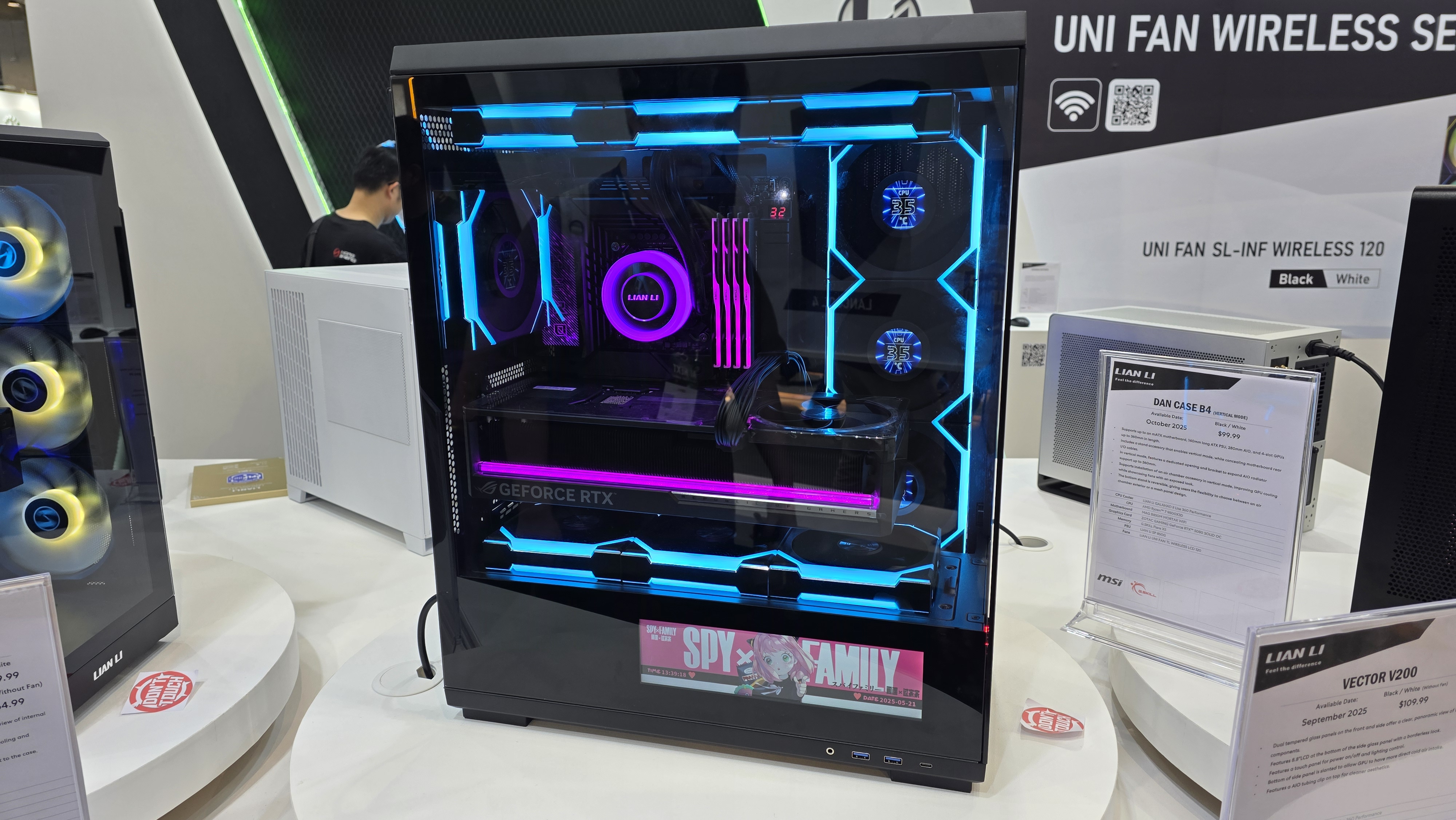

Not to be outdone by anyone on the affordable case front, Lian Li’s V200 is somehow expected to sell for $110, complete with two glass panels, touch controls on the front for power and fan speeds, and a big 8.8-inch screen embedded in the side of the bottom chamber. That screen will also be sold separately – for $85. So if you really want to feel like the V200 is a bargain, think about it like you’re buying the screen and getting the rest of the case for $25.
Again, I would expect this case to sell for at least a little more when it comes to the U.S., but even for $130, this case seems like a bargain when Corsair wants to charge $249 for its case screen alone.
Granted, Corsair’s screen is much larger and supports touch input, but it’s hard not to be impressed by a pretty $110 PC case with a big screen on the side and other fancy features. Lian Li even angled the bottom intake area so the fans do a better job of blowing cool air at your GPU while also giving you a better look at the RGB in your fans.
Read more: Lian Li is replacing mesh front panels with tempered glass on its new Lancool cases
– Matt Safford
MSI X50 Gaming Monitor
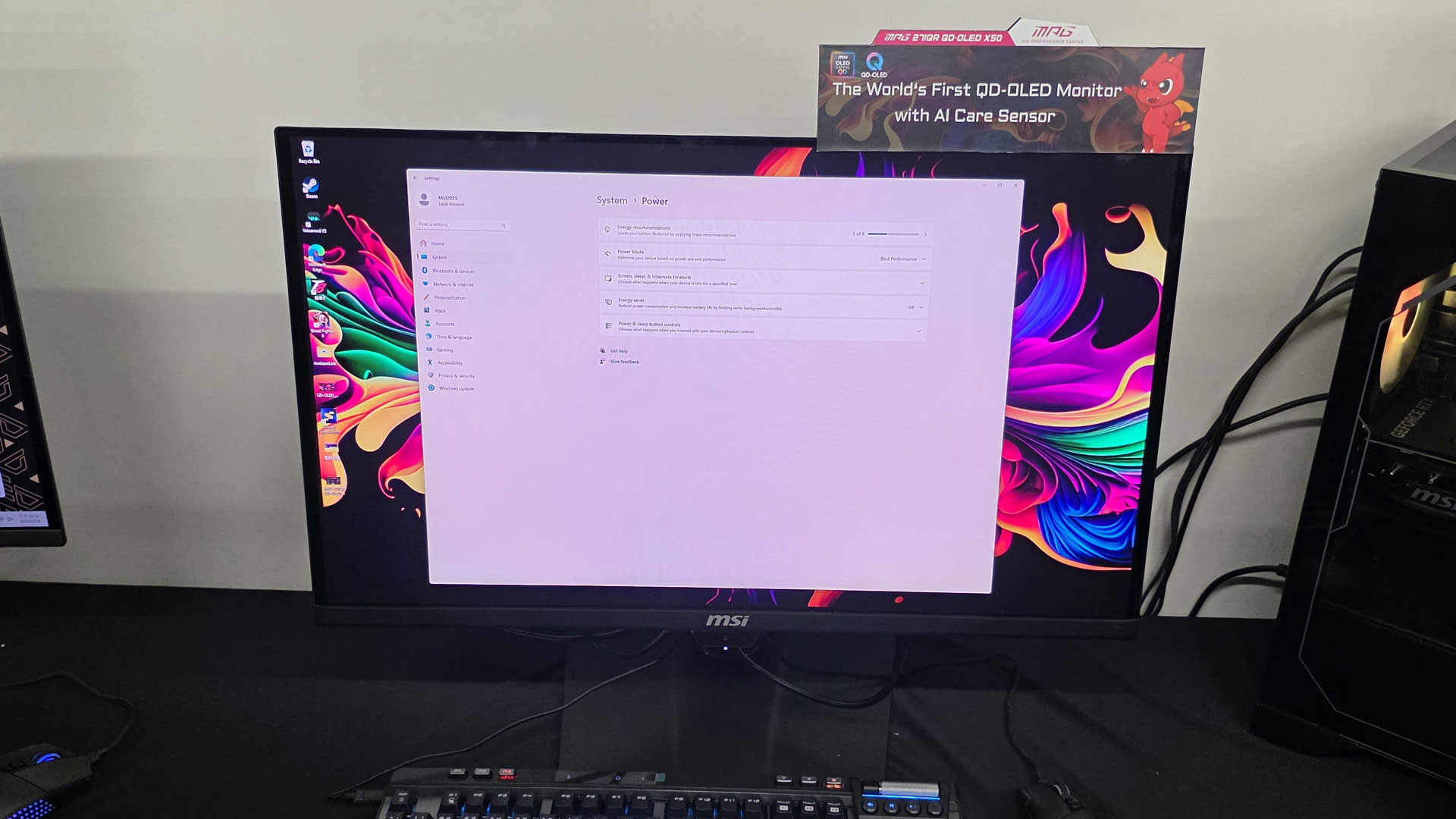

OLED panels are all the rage nowadays with gaming monitors, especially QD-OLED panels, because of their increased brightness levels and superior color. MSI combines QD-OLED technology's fantastic color reproduction and responsiveness with an ultra-rapid refresh rate of 500 Hz with its MPG 271QR QD-OLED X50.
The monitor boasts a 2560 x 1440 resolution and a response time of 0.03 ms. It's also DisplayHDR True Black 500 and VESA ClearMR 21000 certified. MSI even uses an AI Care Sensor to intelligently determine if a human is sitting in front of the monitor and adjust brightness levels or power down the monitor completely to improve panel longevity and reduce power consumption.
In addition to the AI Care Sensor, which is part of MSI's broader OLED Care 2.0 protection suite, the MPG 271QR QD-OLED X50 also comes with a 3-year burn-in warranty.
Read more: MSI’s new 500 Hz QD-OLED monitor leverages AI tech to save it from burn-in
-- Brandon Hill
Asus ROG Strix Ace XG248QSG Monitor
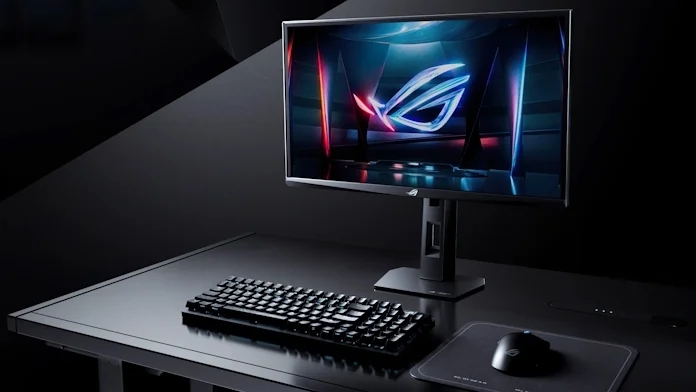

When it comes to gaming hardware, a lot of the marketing around monitors involves bragging rights, and Asus definitely has that covered with the world's first and only 610 Hz gaming monitors. While Acer was technically the first to hit the 600 Hz mark last year, the new Asus ROG Strix Ace XG248QSG manages to squeak by with 610 Hz overclocked (600 Hz native).
To reach that lofty mark, Asus had to go with a tried-and-true TN panel, which it has enhanced and now dubs "Super TN." Super TN technology aims to improve color reproduction and brightness, both sticking points with this older (and seldom used technology for modern gaming monitors).
With that said, the ROG Strix Ace XG248QSG sports a 1920 x 1080 resolution (Full HD), AMD FreeSync Premium and Nvidia G-Sync compliance, DisplayPort 1.4 and HDMI 2.1 support, and covers 90 percent of DCI-P3.
Read more: Asus debuts 24-inch 610 Hz Full HD gaming monitor with a Super TN panel
-- Brandon Hill
Thermaltake MineCube 360 Ultra ARGB AIO
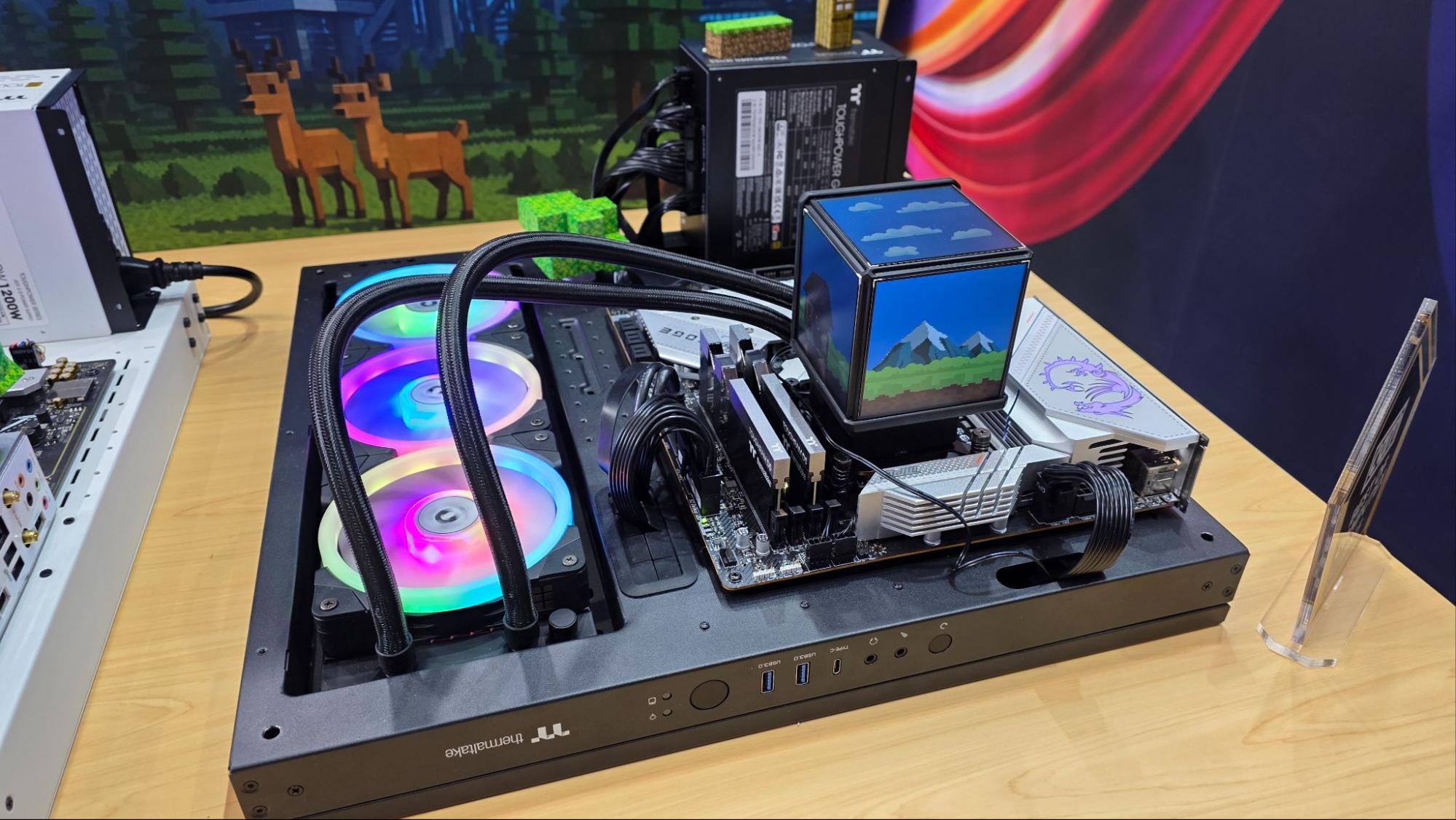

If you can’t ride your PC like a chicken jockey, you can at least get a Minecraft-themed cooler. Thermaltake’s MineCube 360 is a 360mm AIO cooler with a twist: it has a cube on top of the CPU that shows scenes from Minecraft.
Four sides of the cube hold separate, 3.95-inch, 720 x 720 resolution screens. Presumably you can put images other than Minecraft scenes on these, but why would you want to?
The cooler also features a 360mm radiator and SWAFAN EX12 ARGB fans. The fans attach to each other using magnetic quick connections and you control the whole thing using TT RGB software.
– Avram Piltch
V-Color Xfinity Manta DDR5 RAM
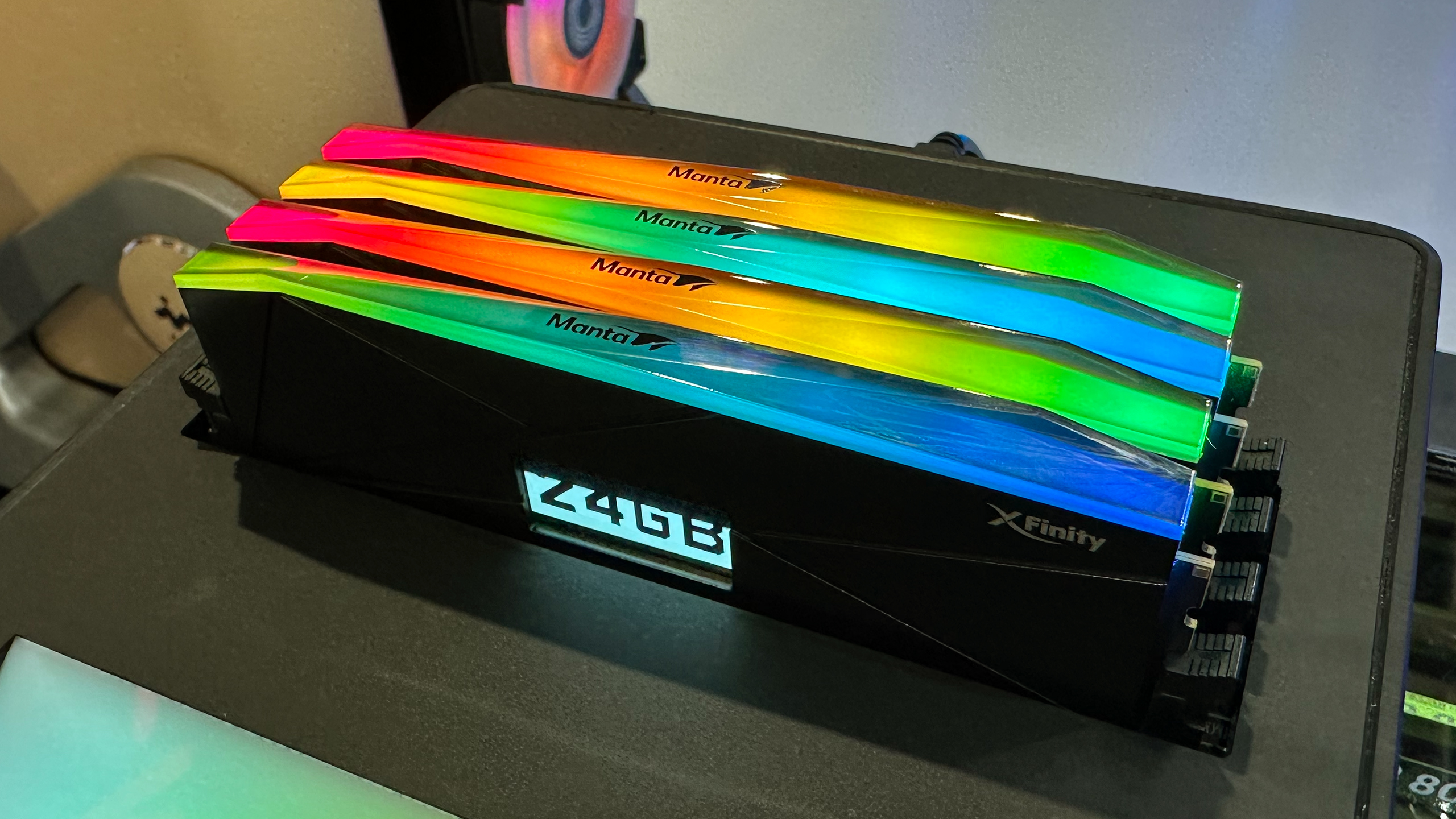

We’ve seen all kinds of RAM modules with different aesthetics. There are DIMMs with RGB and others with 3D printable toppers. Thermaltake even makes a full-color LCD screen you can attach to the top of your memory.
However, we’ve never seen anything like V-Color’s Xfinity Manta. This DDR5 RAM features a programmable LED screen on the front of the module. This monochrome screen can show anything from the amount of RAM to your CPU speed.
The Manta DDR5 modules also features RGB lighting on top.
Read more: V-Color puts displays on memory modules
– Avram Piltch
Avram Piltch is Managing Editor: Special Projects. When he's not playing with the latest gadgets at work or putting on VR helmets at trade shows, you'll find him rooting his phone, taking apart his PC, or coding plugins. With his technical knowledge and passion for testing, Avram developed many real-world benchmarks, including our laptop battery test.
